As an Amazon Associate I earn from qualifying purchases.
Venison liver and onions is a bedrock deer liver recipe you will want to learn. I normally don’t like liver, so this recipe is for skeptics like me. I genuinely loved this dish.
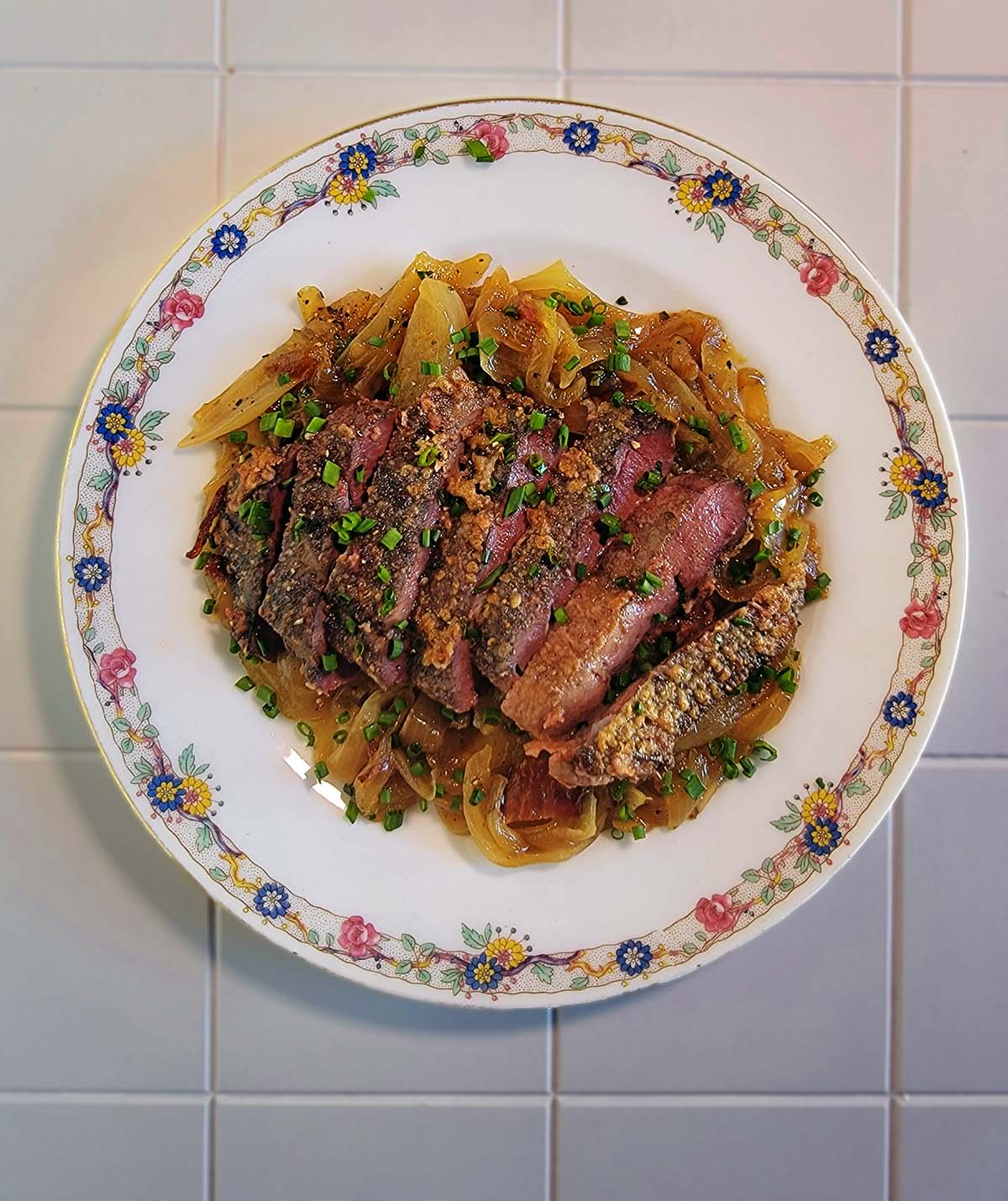
Let me start by saying that I normally leave deer livers in the field. Too many bad experiences with ultra stinky livers, even after my double soak method.
My what? Yes, I have a double soak method for both livers and kidneys. It’s a brine then a dairy soak that really helps tame off odors and flavors in these organs. I know, sure, purists will tell me that if I have to do this, I just don’t like livers. Yeah, bro, that’s exactly right.
So this deer liver recipe starts with the deer — keep in mind this works well as an elk liver recipe, too, and livers from pronghorn or caribou or any large mammal, for that matter.
Bottom line: Make venison liver and onions with young animals. It’s not that big bucks or bulls are alcoholics or anything, but for whatever reason, many seasons of filtering something — tannins, maybe? — they reek. So use this recipe for livers from yearlings, small bucks or youngish does.
Double Soak Deer Liver
First step is to cut the liver into slabs you want to eat. I do this for every deer liver recipe. In the case of venison liver and onions, you will want pieces about 1/4 to 1/2 inch thick, and as large as you can make them, so a little smaller than a plate, usually.
Now make a brine of about 1/4 cup kosher or sea salt (non-iodized) to one quart of water. Soak the pieces in this overnight.
The next morning, pour off the brine and replace it with either milk or buttermilk. Both work well, but I prefer buttermilk with older livers, i.e., not yearlings, because the acidity seems to tame the smell. Also use buttermilk if you really don’t like livers, but want to try anyway.
Let that soak most of the day — no more than 8 hours with buttermilk because of its acidity — then rinse the liver pieces under cold water, pat dry and store in the fridge up to a week. You can also freeze the pieces at this point; mark them “prepped.”
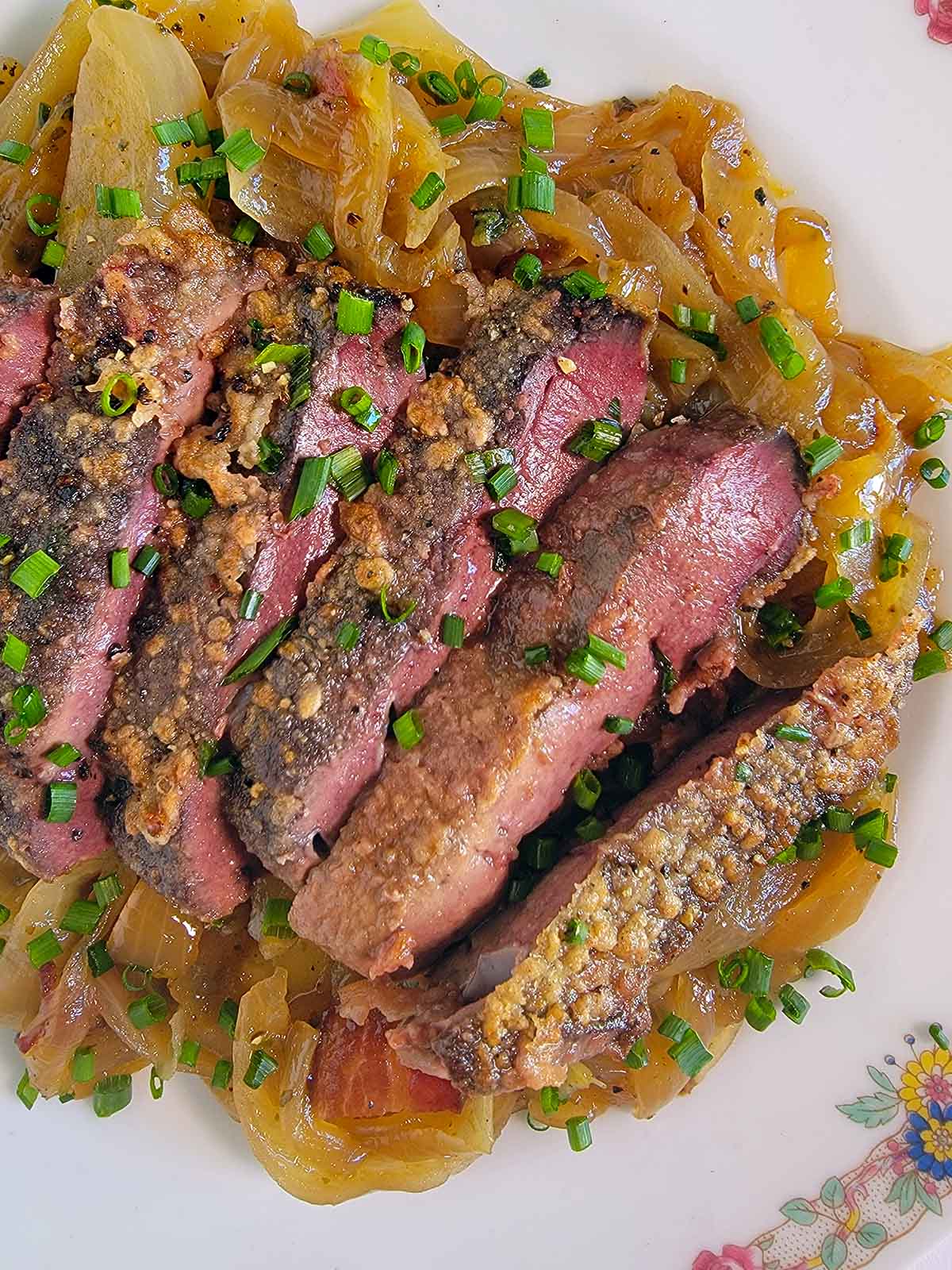
Venison Liver and Onions
I really prefer truly caramelized onions for my venison liver and onions. This takes time, but you can do it ahead, as caramelized onions store well in the fridge.
Caramelizing onions takes at least 30 minutes, but you can shortcut it in two ways: Hard saute the onions over higher heat, which is also nice, or cheat on you caramelizing by sprinkling a little baking soda over the onions as they cook: They will brown much faster, but they’ll also soften significantly.
I also like to add a little thyme and honey to my onions, which boosts the flavor a lot. And the sweetness contrasts nicely with the deer liver. Side note: Pretty much every deer liver recipe works well with something sweet, or at least sweetish. Try a slice of apple alongside a liver pate.
Serving and Storing
Deer liver and onions is a make-it-and-eat-it recipe. It doesn’t keep well, and definitely doesn’t freeze. The components can keep a few days in the fridge, but once made, eat it and enjoy.
As for serving, I usually eat it as-is, maybe with some crusty bread alongside. This is one of the few deer liver recipes I see served for breakfast, so hash browns would be a nice side there.
If you liked this recipe, please leave a ⭐️⭐️⭐️⭐️⭐️ rating and a comment below; I’d love to hear how everything went. If you’re on Instagram, share a picture and tag me at huntgathercook.
Deer Liver and Onions
Ingredients
- 2 pounds yellow onions, sliced thin
- 3 tablespoons butter
- Salt
- 1 teaspoon dried thyme (optional)
- 1 tablespoon honey (optional)
- 1 cup flour, for dusting
- 1 pound venison liver
- Black pepper to taste
- 1 lemon (optional)
Instructions
- Optional pre-soak. If you want, and I recommend it, to tame the odor of the liver, cut them into pieces between 1/4 and 1/2 inch thick, and as large as you want. Soak these overnight in a brine of 1/4 cup kosher or sea salt to 1 quart water. Soak in the fridge. The next morning, discard the brine and soak in milk or buttermilk up to another 8 hours. Rinse under cold water and pat dry.
- Heat the butter in a large pan over medium-high heat. Add the sliced onions. They will mound up and be awkward at first, but keep cooking them and stirring until they wilt. When they do, salt the onions lightly. Stir and cook until you see just a little browning, then drop the heat to medium. Keep cooking, stirring occasionally, until the onions brown more deeply. You might need to drop the heat to low and/or cover the pan to keep things from scorching or sticking.
- When the onions are close to being done, add the thyme and honey, if using. Let this cook another 10 to 20 minutes — up to you. Remove from the heat.
- In another pan, add a few tablespoons of high-heat oil, like canola, grapeseed or avocado oil, and get this hot over medium-high heat. As that is heating, dust the liver pieces in the flour. Press the flour into the meat well on both sides. Note: If you did not brine the livers, you do need to salt them before flouring.
- Sear the livers in the hot oil for no more than 90 seconds per side. You want the livers to be pink in the center. It's better to slightly undercook than overcook deer liver, since overcooked liver gets dry and chalky.
- To finish, serve the livers over a bed of the caramelized onions, with some bread or potatoes. Grind some black pepper and squeeze some lemon juice over them when you serve.
Notes
Nutrition
Nutrition information is automatically calculated, so should only be used as an approximation.
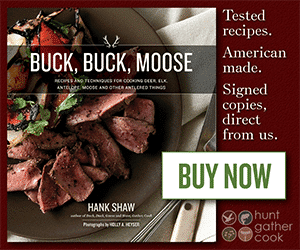
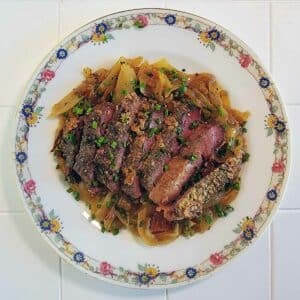
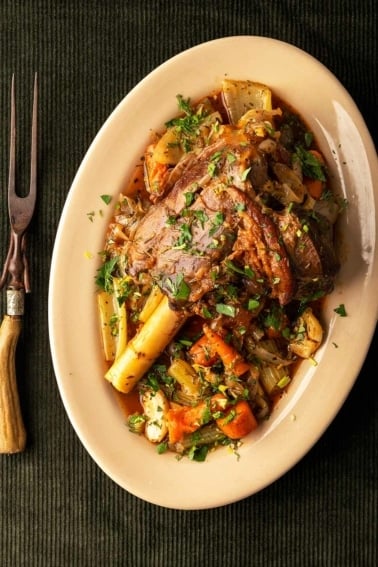
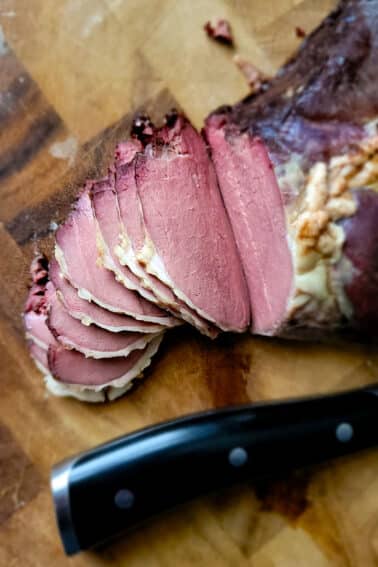
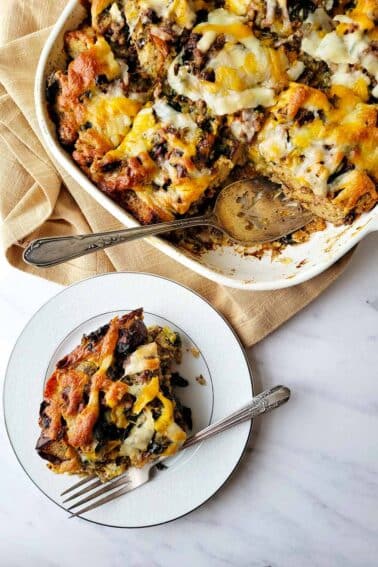
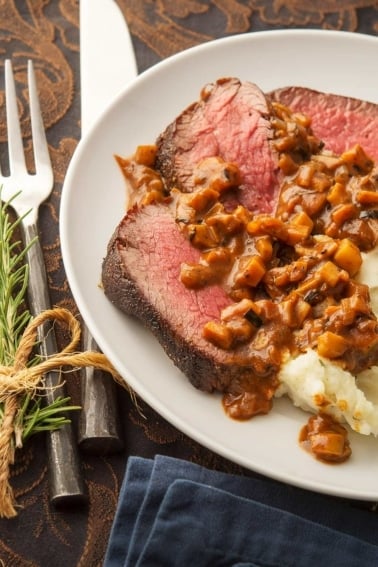
Hey Hank, quick story that happened this past Saturday, opening day here in NY. My son and I hunted, and I was able to harvest a nice fat doe. My son is usually available to help in getting the meat out of the woods for a small fee of liver and onions. Now, I’m all about tenderloins for a harvest day celebration, but I like liver and onions, so I accommodate. This year however, as I cut it into steaks, it didn’t look right. There were these pockets inside containing what looked like blood clots. Nope, I’m out, tenderloin it is. A quick search of the ole web revealed the answer, liver flukes. Ewe. Luckily harmless to humans, and the meat is still good, but still, goddam. Don’t know if you’ve ever come across them (apparently prevalent in the upper midwest), but I’ll certainly be qualifying my livers from now on! As always, thanks for the recipes and stories.
This is a general liver question, Hank. I’ve never met a wild game liver I didn’t like and always look forward to seeing it in the frying pan. I recently brought home a nice whitetail doe and the liver was pretty tough and way chewier than any liver I’ve ever had. Older animal? Bad luck? I’ve always cooked them “straight” but tried an abbreviated version of your brine first out of curiosity and then a little more un-brined. Both were equally tough.
When we are soaking the live in brine and milk/buttermilk, do we keep them outside the fridge or in? Thanks.
Neo: In the fridge. I like to keep everything cold.
Hi Hank, I have been hunting your old stomping grounds in the central Sierras for 50 plus years. We generally eat livers from early season, high country, (archery), bucks in camp with no processing at all, just simple pan prep with or without onions. Young or old, as long as they have been feeding most of the summer above 7000 feet or so, where there are no acorns, they are almost always good. Lower elevation bucks that have been eating acorns (tannins, as you mentioned), often have very strong off flavors in their livers, so we don’t eat them. Coast range bucks sometimes have nearly inedible livers.
The double soak method, and this recipe, will likely make great eating out of most of them.
I would also like to point out that liver, or any part of bears, and wild pigs, should be thoroughly cooked before eating to prevent trichinosis.
Liver and onions…one of the thing I could not eat as a kid. Now one of my favorites after grilled heart. Is that one of the plates you purchased in Lindsborg?
Bryan: Nope, thrift store special!
I learned another valuable tip years ago for the avoiding unbearably strong flavored livers. In addition to only using the livers from young animals, also , skip it if the bullet or arrow punctures the diaphragm. It seems that when this happens, the liver instantly soaks up the unpleasantness and takes on a barnyard smell. After being more choosy in which livers I use, I went from a hater to a liver lover!
Hello Hank, and thanks for this recipe. I am a big fan of your website, blog, and philosophy of foraging and living within the gifts that nature provides. My dad owned a meat market in Illinois, and we lived on a farm, where he grew his own stock. I am now in my 70s, and have spent many years in the “food service” business as a chef in hotels, restaurants, corporate dining, and even as a Culinary Instructor for about 10 years, I have eaten, I think every form of offal, and I do reserve as much of that from the game I harvest. I would like to contribute a few personal observations on this post and recipe. And, I will try to be brief. When people tell me they don’t like liver, I tell them, “You have not had it prepared properly”. You mention in your recipe that if you over cook liver it becomes “dry and chalky”. It will also have a much stronger “metallic and irony” taste, that many people find offensive. I want liver, of any animal or age, to be cooked to rare to med-rare. I want the juices to still be pooling on the top side of the meat. When mom cooked liver, in addition to the onions, bacon was also always part of the cooking. She would cook it about 3/4 done, coked but not crispy, then remove it and cook the onions in the bacon fat. I will have to try the honey addition– sounds like a great add. Thank you for the recipe.
My father and I have an interesting experience with deer liver. We would harvest, soak, and freeze the young livers only to find them inedible when we cooked them. So Dad got into the habit of throwing them out (unless he wanted to make liver sausage). Then one year he looked at the liver from a young doe and asked me to fry it up with caramelized onions, the same way we cook pork liver and beef liver. I cooked half of it and we enjoyed it so I froze the other half. A month later I unthawed it and guess what? Yep, inedible. By the way we use a double soak method for any livers we save: An overnight soak in salt water (1/4 cup salt in 1 quart water) then a 6 hour soak in vinegar water. Rinse well and pat dry before cooking. By the way, the liver is first sliced in 1/2 to 1/4 inch pieces. Maybe your problem with deer liver is that you freeze it first? It was ours.
Great way to caramelize onions: fill a crock pot with onions, dot with butter and cook 6-8 hours on low, or 5-6 hours on high, or some combination of low/high to get to the stage you like them. They freeze very well. I freeze them on a cookie sheet, then break into sections and store in plastic bags. They’re really good.
The crockpot/slow cooker method was suggested to me as the first step in making French onion soup! Stands to reason it would work for just caramelizing onions in bulk. I have used it to caramelize thin sliced fennel by the way.
Enjoy all your recipes. Super ?
Try topping it all off with some melted cheddar cheese at the end. My Dad never like liver but devoured the liver and Caramelized onions when topped with cheese. The cheese cuts the texture and anything is better with cheese!
Sounds awesome a definite go to for me ?
I love liver. When I harvest any wild game, I am about max use of the animal. We enjoy deer liver, heart and tongue. Your recipe is perfect and we always prep and cook the liver in a similar manner.
Thank you and Happy Christmas